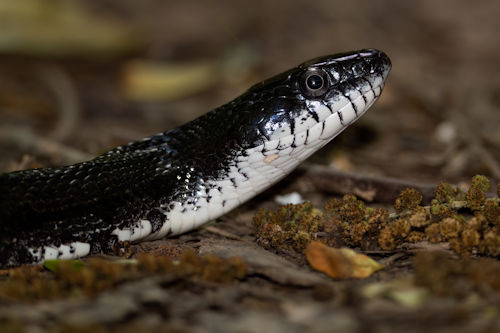Residential & Commercial
Home is For Family,
Not Critters
(No Dogs & Cats)
OFFERING FAST, EFFECTIVE & HUMANE SOLUTIONS for RESIDENTIAL and COMMERCIAL
Providing the most ethical and humane solutions available for your critter problems. Don’t let nuisance animals ruin your day
NEED HELP NOW?
Don’t Let Nuisance Animals Ruin Your Day
Enjoy Your Home Again
Imagine, no more noises in the attic. No more worries about bumping into a critter in the middle of the night.
COMMON HOME INVADERS
BATS

Advantages of Bats
Bats, often misunderstood creatures, play crucial roles in various ecosystems. Many species are exceptional pollinators, vital for maintaining the health of many plant species. Some, like the agave plant, depend exclusively on bats for pollination. Bats also excel in pest control, consuming vast quantities of insects nightly, benefiting agriculture by reducing crop pests and limiting the spread of diseases like malaria. Their guano (droppings) is an excellent natural fertilizer, enriching soil nutrients. Furthermore, bats contribute to medical advances; research on their echolocation and immune systems offers insights into human conditions. Their diverse diet and habitat needs also make them important indicators of environmental health.

Property Damage From Bats
Bats, though beneficial for insect control, can cause significant damage to homes. When they roost in attics or walls, their guano (droppings) and urine can accumulate, leading to unpleasant odors and potential health hazards like histoplasmosis, a lung disease caused by the inhalation of fungal spores in bat droppings. The guano can also corrode wood and drywall, weakening structural integrity. Bats can chew through insulation, wires, and other materials, creating fire risks and energy inefficiencies. Their entry points, often small gaps or holes, can let in other pests and cause water leakage, further damaging the home. Effective bat exclusion and home maintenance are essential to prevent these issues.

Bat Related Disease
Bats are unique as reservoir hosts for numerous zoonotic diseases, owing to their physiological and ecological traits. Their strong immune systems enable them to carry viruses like rabies, Hendra, Nipah, and Ebola without showing symptoms. Notably, bats are suspected reservoirs for coronaviruses, including strains linked to severe acute respiratory syndrome (SARS) and Middle East respiratory syndrome (MERS). The interface between bats, humans, and domestic animals facilitates disease transmission. Factors like habitat encroachment and wildlife trade exacerbate this risk. Understanding bat ecology and maintaining a safe distance from them are crucial for reducing zoonotic disease transmission risks.
RACCOONS

Important Raccoon Information
Raccoons, scientifically known as Procyon lotor, are medium-sized mammals native to North America but have spread to Europe and Japan. Recognizable by their distinctive black mask and ringed tail, they typically weigh between 5 to 20 pounds. Raccoons are omnivorous, with diets varying seasonally to include fruits, plants, nuts, insects, and small animals. They are known for their intelligence and dexterity, often opening lids and untangling knots. Raccoons are nocturnal, primarily active at night. They adapt well to various habitats, including forests, mountains, and urban areas. However, their adaptability has led to them being considered pests in some regions. Their lifespan in the wild averages 2-3 years, but they can live longer in captivity.

How Raccoons Can Damage Your Property
Raccoons, while often perceived as cute and harmless, can cause significant damage to homes. These nocturnal creatures are highly adaptable and skilled at exploiting urban environments. They often seek shelter in attics, where they can tear insulation, gnaw on wood and electrical wires, leading to potential fire hazards. Their nesting habits can clog vents and lead to costly repairs. Raccoons are also known to damage roofs and soffits while trying to gain entry. Furthermore, their waste can pose health risks, as it may contain harmful parasites and pathogens. The presence of raccoons often leads to increased noise at night, disrupting homeowners’ peace.
SQUIRRELS

Important Squirrel Information
Squirrels, small or medium-sized rodents, are known for their bushy tails and agile movements. Primarily herbivores, they play a crucial role in forest ecosystems by aiding in seed dispersal. Squirrels are divided into tree squirrels, ground squirrels, and flying squirrels. Tree squirrels, like the common grey squirrel, are adept climbers and often live in wooded areas. Ground squirrels, including chipmunks, prefer earthy burrows. Flying squirrels, uniquely, glide using skin membranes. They have keen senses of vision and smell, vital for locating food, which they often store for winter. Human-squirrel interaction can be complex, as they sometimes invade urban spaces.

How Squirrels Can Damage Your Property
Squirrels, while seemingly harmless and even charming, can cause significant damage to homes. These agile rodents are known to chew through a variety of materials, including wood, insulation, and electrical wiring, leading to costly repairs. Their sharp teeth can easily gnaw on exterior trim, vents, and even roofing materials, creating entry points into attics or crawl spaces. Once inside, squirrels can build nests, which may block ventilation systems and pose fire hazards due to chewed electrical wires. Additionally, their droppings and urine can contaminate insulation, creating health risks and unpleasant odors. Preventative measures like sealing entry points and regular inspections are essential to mitigate these risks.
BIRDS

Cavity Nesting Birds
Cavity-nesting birds, such as woodpeckers, nuthatches, and certain owl species, have adapted remarkably to suburban and urban environments. In these areas, they often face a shortage of natural tree cavities due to urban development and tree trimming. However, these resilient birds utilize alternative nesting sites like abandoned buildings, crevices in structures, or nest boxes provided by humans. Their presence in urban areas brings ecological benefits, such as pest control and biodiversity. Moreover, their adaptation offers valuable opportunities for urban dwellers to engage with nature, fostering awareness and conservation efforts. These birds, thriving amidst urbanization, symbolize nature’s resilience and adaptability.

How Birds Can Damage Your Property
Birds, while beautiful and often beneficial, can inadvertently damage homes. Nesting in vents or gutters, they can obstruct airflow or water drainage, potentially leading to moisture problems or costly repairs. Bird droppings, acidic in nature, can erode paint and roofing materials, impacting a home’s structural integrity and aesthetic appeal. Additionally, birds may peck at roofing materials, siding, or window seals, causing physical damage. The accumulation of nesting materials can pose a fire hazard, especially near electrical equipment. Noise from birds, especially early in the morning, can be a nuisance. Finally, birds can attract parasites and pests, like mites and ticks, which can infiltrate homes, posing health risks.
Enjoy Some Articles From Our Learning Center
Understand the Risks Associated With Wild Animals in Your Home
There are real risks associated with nuisance animal removal. This is a task better left to the professionals.
%
Property Damage
%
Disease Exposure
%





